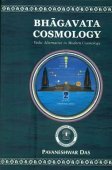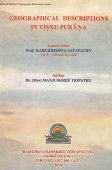Vidyapitha, Vidya-pitha, Vidyāpīṭha: 8 definitions
Introduction:
Vidyapitha means something in Hinduism, Sanskrit, Marathi. If you want to know the exact meaning, history, etymology or English translation of this term then check out the descriptions on this page. Add your comment or reference to a book if you want to contribute to this summary article.
Images (photo gallery)
In Hinduism
Purana and Itihasa (epic history)
Source: Cologne Digital Sanskrit Dictionaries: The Purana IndexVidyāpīṭha (विद्यापीठ).—Sacred to Lalitā.*
- * Brahmāṇḍa-purāṇa IV. 37. 47.

The Purana (पुराण, purāṇas) refers to Sanskrit literature preserving ancient India’s vast cultural history, including historical legends, religious ceremonies, various arts and sciences. The eighteen mahapuranas total over 400,000 shlokas (metrical couplets) and date to at least several centuries BCE.
Shaivism (Shaiva philosophy)
Source: Shodhganga: Temple management in the ĀgamasVidyāpīṭha (विद्यापीठ) are specials halls in the Śaiva temple for the purpose of teaching and learing the Śaivāgamas.—The Ādiśaiva also has the responsibility to propagate Śaiva precepts and expound the carya, kriya, yoga and jñāna-pādas of Śaivāgamas and related literature. Temples have special Vidyāpīṭha or study halls for this purpose. In a place cleaned with gomaya and decorated with colour powder and flowers, lit with many lamps and fragrant with incense, theĀcārya, surrounded by Śuddhaśaiva, should impart Śivajñāna through word or letter . If the student makes errors or if the material is corrupted by time, through negligence, has addition or deletion of letters due to careless scribes, is not properly checked by Ācāryas with little knowledge, is repetitive or has meaningless words, is disjoint, or self-contradictory, the deśika has to correct the student in those places.
Source: eScholarship: The descent of scripture: a history of the KamikagamaVidyāpīṭha (विद्यापीठ) refers to the “throne of knowledge”, according to the Kāmikāgama: an ancient Śaiva Āgama scripture in 12,000 Sanskrit verses dating to at least the 5th century and represented as an encyclopedic account of ritual instructions (kriyāpāda).—In modern print editions, the Kāmika-āgama is structured in two major parts. The Uttarabhāga consists of 98 chapters (paṭalas) [...] In Chapters 67 to 71, we find accounts of the installation of the throne of knowledge (vidyāpīṭha-pratiṣṭhā), the installation of Śiva’s ten divine weapons, Śiva’s trident, the installation of a “lion’s seat”, and the installation of a chariot for festival processions.

Shaiva (शैव, śaiva) or Shaivism (śaivism) represents a tradition of Hinduism worshiping Shiva as the supreme being. Closely related to Shaktism, Shaiva literature includes a range of scriptures, including Tantras, while the root of this tradition may be traced back to the ancient Vedas.
Shaktism (Shakta philosophy)
Source: Google Books: ManthanabhairavatantramVidyāpīṭha (विद्यापीठ) refers to the Seat of Scripture associated with Kāmarūpa, one of the sacred seats (pīṭha), according to the Ṣaṭsāhasrasaṃhitā, an expansion of the Kubjikāmatatantra: the earliest popular and most authoritative Tantra of the Kubjikā cult.—On the basis of hardly more than a hint in the Ṣaṭsāhasrasaṃhitā, it outlines a scheme of sixteen parts for each seat, conscious, no doubt, that this is an ideal number. The commentary normally limits itself to do no more than explain what is presented in the text. This is one of the few instances it adds substantially to its contents [i.e., Seats of Scripture—Vidyāpīṭha]. Presumably this is because when it was written the presentation of the features of the seats on this model was the accepted norm.

Shakta (शाक्त, śākta) or Shaktism (śāktism) represents a tradition of Hinduism where the Goddess (Devi) is revered and worshipped. Shakta literature includes a range of scriptures, including various Agamas and Tantras, although its roots may be traced back to the Vedas.
Languages of India and abroad
Marathi-English dictionary
Source: DDSA: The Molesworth Marathi and English Dictionaryvidyāpīṭha (विद्यापीठ).—n (S) A seat or place of science or learning.
Marathi is an Indo-European language having over 70 million native speakers people in (predominantly) Maharashtra India. Marathi, like many other Indo-Aryan languages, evolved from early forms of Prakrit, which itself is a subset of Sanskrit, one of the most ancient languages of the world.
Sanskrit dictionary
Source: Cologne Digital Sanskrit Dictionaries: Monier-Williams Sanskrit-English DictionaryVidyāpīṭha (विद्यापीठ):—[=vidyā-pīṭha] [from vidyā > vid] n. seat of kn°, [Hemādri’s Caturvarga-cintāmaṇi]
Sanskrit, also spelled संस्कृतम् (saṃskṛtam), is an ancient language of India commonly seen as the grandmother of the Indo-European language family (even English!). Closely allied with Prakrit and Pali, Sanskrit is more exhaustive in both grammar and terms and has the most extensive collection of literature in the world, greatly surpassing its sister-languages Greek and Latin.
Kannada-English dictionary
Source: Alar: Kannada-English corpusVidyāpīṭha (ವಿದ್ಯಾಪೀಠ):—[noun] an organisation, institution engaged in educating people and propogating knowledge.
Kannada is a Dravidian language (as opposed to the Indo-European language family) mainly spoken in the southwestern region of India.
Nepali dictionary
Source: unoes: Nepali-English DictionaryVidyāpīṭha (विद्यापीठ):—n. a college of university status;
Nepali is the primary language of the Nepalese people counting almost 20 million native speakers. The country of Nepal is situated in the Himalaya mountain range to the north of India.
See also (Relevant definitions)
Partial matches: Vidya, Pitha, Pita.
Starts with: Vidyapithapratishtha.
Query error!
Full-text (+49): Pitha, Vidyapithapratishtha, Viapeeth, Picumata, Brahmayamala, Siddhayogeshvarimata, Shirashcheda, Underworld, Flying, Dumb, Deaf, Disappearance, Pacification, Eloquence, Final release, Magic wand, Blind, Impotent, Changing, Black magic.
Relevant text
Search found 17 books and stories containing Vidyapitha, Vidya-pitha, Vidyā-pīṭha, Vidyāpīṭha; (plurals include: Vidyapithas, pithas, pīṭhas, Vidyāpīṭhas). You can also click to the full overview containing English textual excerpts. Below are direct links for the most relevant articles:
Informal Education of Sanskrit in Kerala (by Jayasree M.)
27. Conclusion and Notes < [Chapter 3 - Informal Education of Sanskrit in Kerala: the Traditional Streams]
4. Kanchi Kamakoti Yajurveda vidyapitham < [Chapter 3 - Informal Education of Sanskrit in Kerala: the Traditional Streams]
21. Tantra and Education in Kerala < [Chapter 3 - Informal Education of Sanskrit in Kerala: the Traditional Streams]
Isanasivagurudeva Paddhati (study) (by J. P. Prajith)
22. Tantra-ratnavali and Laghupujaratna < [Chapter 1 - History and scope of Tantric Literature]
Dasabhumika Sutra (translation and study) (by Hwa Seon Yoon)
On the use of Human remains in Tibetan ritual objects (by Ayesha Fuentes)
Formative sources for ritualized charnel asceticism < [Chapter 2 - The use of skulls and bone ornaments]
Charnel materials in the Saṃvara tradition < [Chapter 2 - The use of skulls and bone ornaments]
Kāpālika implements in the formalization of Buddhist Mahāyoga Tantra < [Chapter 2 - The use of skulls and bone ornaments]
World Journal of Pharmaceutical Research
Description of shukra in laghu trayi < [2019: Volume 8, July issue 8]
Hindu Pluralism (by Elaine M. Fisher)
Twin Texts: The Canonization of the Tiruviḷaiyāṭal Purāṇam < [Chapter 4 - The Language Games of Śiva]
Related products


